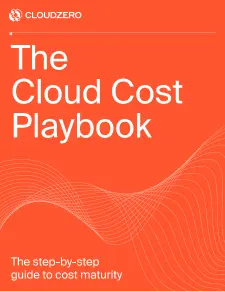Traditionally, companies had to use separate tools for ETL, data storage, and analytics. Often, this resulted in slow, complex, and expensive data workflows
A good example is PwC’s Deals, Insights & Analytics (DIA) team, which faced similar challenges. According to Microsoft, bespoke solutions often took months to build and were difficult to merge, slowing projects and driving up costs.
That changed when PwC adopted Azure Synapse Analytics. The result? Faster insights, simplified workflows, and efficient scalability.
In this article, we’ll unpack what Azure Synapse is, where it shines, and common use cases. We will also introduce you to a cost-intelligent approach to understanding and optimizing your Azure spend.
What Is Azure Synapse Analytics?
Azure Synapse Analytics is Microsoft’s unified analytics service that brings data warehousing, big data analytics, and data integration into a single platform. It’s built to speed up time-to-insight across both structured and unstructured data without bouncing between different tools.
Think of Synapse as the place where you can ingest, prepare, explore, and analyze enterprise data end-to-end, then hand it off to BI or ML, all in one workspace. It natively integrates with services like Power BI, Azure ML, Cosmos DB, and Azure Storage, ensuring smooth workflows.

Azure Synapse Analytics Architecture And Features
Azure Synapse uses a modern cloud architecture that separates storage from compute. Your data is stored in Azure Data Lake Storage, while compute resources handle querying and analytics. This design lets you scale up or down at any time, keeping performance high.
It runs on a massively parallel processing (MPP) framework, which splits data across multiple nodes. Each node works on a portion of the query simultaneously, allowing Synapse to handle massive datasets in seconds rather than hours.

Dedicated vs. serverless SQL pools in Azure Synapse
You can query data directly from Azure Data Lake Storage — using serverless SQL for quick, on-demand analysis.
Synapse also includes built-in data integration through Synapse Pipelines. This enables you to move, transform, and monitor data without leaving the platform. It uses the same concepts as Azure Data Factory, allowing teams to build powerful ETL or ELT workflows visually and at scale.

Flow of data in Azure Synapse
All of this happens inside Synapse Studio. This is a unified workspace for managing SQL queries, Spark notebooks, pipelines, and monitoring. You no longer need to switch between tools to prepare, load, and analyze data — everything is in one environment.
Here’s Microsoft’s in-depth guide on building and managing data pipelines.
It also combines the capabilities of both a data lake and a data warehouse. This lets you query raw files directly or load them into structured tables for deeper analytics.
See the data lakes architecture here.
Other Azure Synapse key features
- Apache Spark integration. Built-in Spark pools enable large-scale data processing, streaming, and machine-learning workloads.
- Pause and resume computing. Allows you to suspend dedicated resources when idle, saving costs.
- Synapse Link. Enables real-time analytics on operational data from sources such as Cosmos DB or Dataverse without complex ETL. Here is a complete guide to Azure database pricing.
- Data notebooks. Interactive notebooks for data wrangling, visualization, and experimentation inside Synapse Studio.
- Monitoring and performance insights. Built-in dashboards to track query performance, pipeline runs, and resource usage.
- Built-in connectors. Native support for over 90 data sources (SQL Server, Oracle, Salesforce) for seamless data ingestion.
- Integration with Power BI and Azure ML. Seamless connection to visualization and machine-learning tools for end-to-end analytics.
- Data retention and recovery. Automated backups and restore points for business continuity.
- Automatic scaling and workload management. Automatically adjusts compute resources to match demand and prevent bottlenecks.
- Code-Free data flows. Visual tools to design and run transformations without writing code.
- Security and compliance. Role-based access control, private endpoints, and Microsoft Purview integration for governance.
Azure Synapse Analytics: Common Use Cases
Here are practical use cases that show how organizations use Synapse:
- Cloud migration and platform modernization. Enterprises move legacy data warehouses to the cloud to improve scalability and agility. Companies migrating from SQL Server or Oracle use Synapse to modernize infrastructure and reporting.
- Real-time supply chain and inventory tracking. Enterprises use Synapse to process and analyze incoming supply-chain data quickly.
- Fraud detection and risk monitoring. Financial firms stream millions of transactions into Synapse to detect anomalies in real time.
- Real-time operational analytics. Synapse Link enables teams to instantly analyze operational data from Cosmos DB or Dataverse, eliminating the need for complex ETL.
- Predictive maintenance and IoT analytics. Manufacturers use Synapse to analyze sensor and device data, spotting equipment failures before they happen.
- Enterprise data warehouse modernization. Organizations replace outdated on-premise systems with Synapse for faster performance and lower costs.
- Customer 360 and omnichannel analytics. Retailers combine data from stores, e-commerce, and CRM systems to personalize marketing and improve service.
- Archival and cost-optimized data retention. Public institutions and enterprises use Synapse to analyze archived or historical data stored cheaply in the cloud.
Related read: 30+ Essential ETL Tools For Data Pipelines
Limitations Of Azure Synapse Analytics
While Azure Synapse is robust, it isn’t without its drawbacks.
- Manual scaling. Synapse doesn’t scale automatically. You have to manually pause, resume, or adjust compute levels whenever workloads change.
- Limited SQL features. Some SQL functions, such as triggers, cross-database queries, and certain data types, aren’t supported in the dedicated SQL pool.
- Steep learning curve. It can take time to understand pipelines, Spark pools, and distributed query design, especially for teams new to Azure or MPP systems.
- Integration gaps. Synapse works best within Azure. Connecting it to systems in other clouds or older databases often requires complex configurations or third-party tools.
- Complex pricing. Costs can rise quickly if resources aren’t paused or if queries scan large volumes of data. Tracking spend requires active monitoring.
See detailed Azure Synapse pricing here.
How Azure Synapse Compares To Competitors
The usual Azure Synapse alternatives are Snowflake, Databricks, AWS RedShift, and Google BigQuery.
Here’s how they compare:
|
Category |
Azure Synapse |
Snowflake |
BigQuery |
AWS RedShift |
Databricks |
|
Ecosystem fit |
Best for Microsoft/Azure users (Power BI, Azure ML, Data Lake) |
Multi-cloud (AWS, Azure, GCP) |
Deep Google Cloud integration |
Tight AWS ecosystem integration |
Works across clouds; integrates with Azure, AWS, GCP |
|
Architecture |
Unified warehouse + lake + ETL (SQL, Spark, Pipelines) |
Cloud data warehouse |
Fully serverless warehouse |
Traditional MPP warehouse |
“Lakehouse” platform unifying data lake + warehouse |
|
Scaling model |
Manual/semi-auto (dedicated or serverless) |
True auto-scaling |
Fully serverless |
Manual scaling |
Auto-scaling for clusters |
|
Multi-cloud support |
Azure only |
Multi-cloud |
GCP only |
AWS only |
Multi cloud |
|
Real-time analytics |
Strong (via Synapse Link + Spark) |
Limited (external tools |
Supported via Dataflow |
Moderate (via Kinesis) |
Excellent for streaming and AI pipelines |
|
Cost model |
Hourly (dedicated) or per-query (serverless) |
Pay-per-use, auto-suspend |
Pay-per-query |
Hourly + reserved options |
Pay-as-you-use compute clusters |
|
Performance tuning |
Needs distribution and partition design |
Self-optimizing |
Self-optimizing |
Requires tuning |
Optimized for Spark + ML workloads |
|
Where it falls short |
Manual scaling + Azure-only |
Limited built-in ETL |
Locked to GCP |
Weak real-time AI |
Steeper learning curve for SQL-only teams |
How You Can Maximize ROI From Synapse
Azure Synapse Analytics is one of the most adopted analytics platforms today. According to third-party data, over 19,000 organizations worldwide use it to manage and analyze data at scale.
Based on user reports on G2 and Microsoft Learn, most medium to large companies spend between $3,000 and $100,000 per month on Synapse. Costs depend on data size, storage, and query volume. Dedicated SQL pools are billed hourly, while serverless options charge per query. This flexibility gives teams better control over cost and performance.
To achieve the best return, begin by focusing on visibility and control. Tag every resource to track which projects or teams drive costs. Use serverless SQL pools for quick or occasional queries. Reserve dedicated compute only for constant workloads and pause it when idle. Keep data clean, optimize tables, and remove anything you no longer need. Even small adjustments can reduce compute time and lower your bill.
When paired with CloudZero, you can take Azure cost optimization even further:
- Break down spend by workload or feature to see what drives your Azure Synapse costs
- Spot hidden inefficiencies early, like idle compute or heavy query scans
- Understand cost trends over time to forecast spend more accurately
- Align spend with business outcomes so every dollar supports measurable value
- Empower engineering and finance teams to make cost-aware decisions together
With CloudZero, your Synapse costs stop being a mystery; they become a source of insight and control.  to see how it works.
to see how it works.








